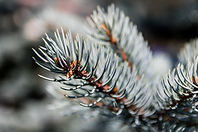Dobbs Weir
Dobbs Weir is definitely one of those special places you’ll want to visit again and again. Relaxing walks, wildlife watching, history, excellent fishing, picnics, a café and pub – Dobbs Weir really does have something for everyone.
It’s also an ideal base for exploring further afield, so if you feel like stretching your legs, just follow the walking routes to Nazeing Meads, Admirals Walk and Glen Faba.
Nazeing Meads
Within a 10 minute walk south of Dobbs Weir you’ll find three large lagoons, wildflower meadows, woodlands and a delightful sense of tranquillity at Nazeing Meads. These lagoons are perfect for wintering birds such as Goldeneye and Black-headed Gull.
Fishing and watersports are popular here, and you can stroll along the grass path.
St Paul’s Field
St Paul’s Field is a newly opened green space in the park, located east of Nazeing North Lagoon—home to Broxbourne Sailing Club. Once a disused landfill site, it’s now a peaceful area for walking, fishing, and enjoying nature.
A new footpath completed in 2025 connects Meadgate Road to Dobbs Weir Road, improving access and linking to the wider park trail network.
Wildlife
The path across St Paul’s Field follows the eastern boundary of Nazeing Meads, a large expanse of open water forming part of the River Lee flood relief system. The deep open water provides a plentiful supply of food for diving ducks including Tufted Duck and Great Crested Grebe. Look out from the viewing screen and you may catch the Great Crested Grebes famous ‘penguin dance’ as pairs form their bond.
In winter, Nazeing Meads is a good spot for wintering duck including Goldeneye and Goosander. There’s a large winter gull roost, with numbers reaching over 2000, typically supporting Common and Black-headed Gull. It’s worth looking out for other species including the occasional Mediterranean Gull.
On a warm summer evening you may be able to spot bats feeding on insects, low over the surface of the water.
There are large patches of scattered and dense scrub across the grassland, in summer listen out for the distinctive song of the Chiffchaff – you’ll see how it got its name – you may spot it flitting through the bushes. Listen out for the yaffle of a Green Woodpecker and see it foraging amongst the grasses.


















.jpg)
.jpg)
.jpg)




.jpg)
.avif)
.jpg)